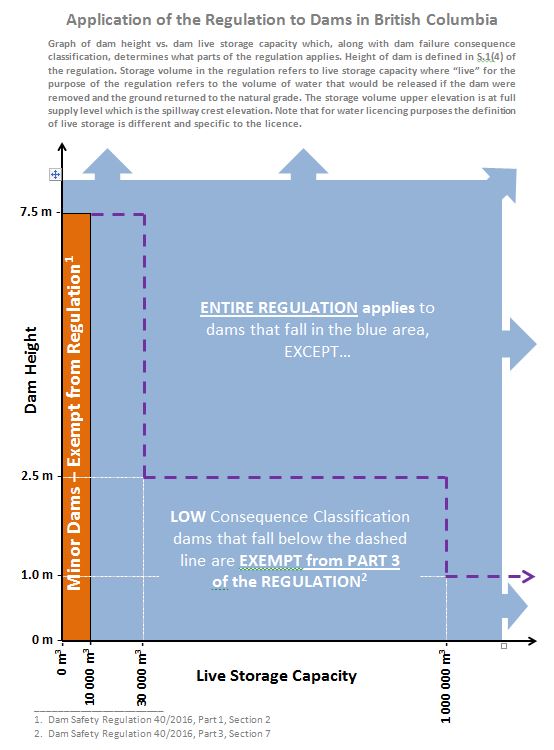Dam Safety Regulation
Last updated: July 12, 2023
On this page
The Dam Safety Regulation sets requirements and best practices for all aspects of dam design, construction, operation, maintenance, removal and decommissioning of dams. The Dam Safety Regulation (DSR) came into effect on February 29, 2016, replacing the former B.C. Dam Safety Regulation (2000).
Regulated dams require a water licence under the Water Sustainability Act and must meet the requirements specified in the Dam Safety Regulation.
The Dam Safety Regulation defines a dam as a barrier constructed for the purpose of enabling the storage or diversion of water from a stream or an aquifer, or both, plus any other works incidental to or necessary for the barrier.
The Regulation is composed of five parts:
Part 1
Provides definitions and interpretations and describes application of the Regulation to minor dams that are less than 7.5 m high and store 10,000 m3 or less of water, which may be exempt from the Regulation.
Part 2
Sets requirements that apply to all other dams, except those which are exempt.
Part 3
Sets additional requirements for specific dams, including those:
- 1 m or in height and capable of impounding a total storage volume of water greater than 1,000,000 m3
- 2.5 m or more in height and capable of impounding a total storage volume of water greater than 30,000 m3
- 7.5 m or more in height, regardless of the amount of water able to be stored
- Dams with a failure consequence classification of significant, high, very high or extreme
Part 4
Includes general provisions and offences applicable to all regulated dams.
Part 5
Provides the transition periods for phasing out old requirements and phasing in new requirements.
Use the resources below for more information about how the Regulation is applied to different dams

